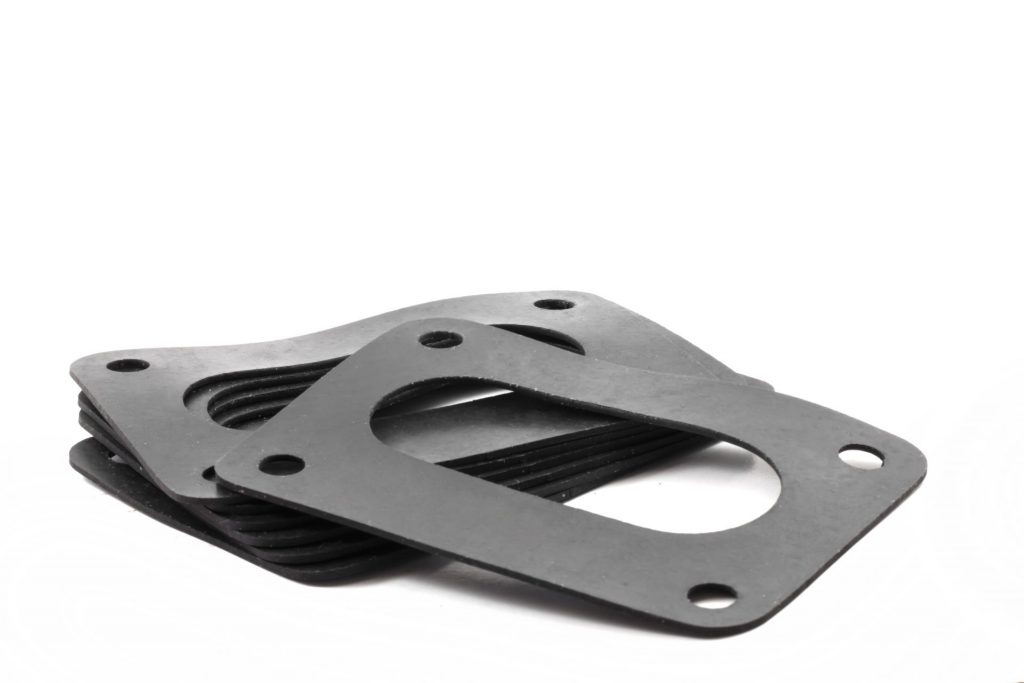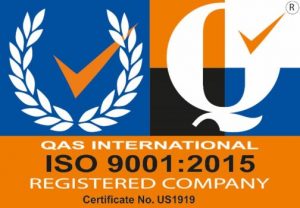
Synthetic rubbers come in many forms. Two of the most common for the automotive, HVAC and roofing industries are Ethylene Propylene Diene Monomer (EPDM) and Neoprene. Both types of rubbers have many uses, but what is the difference between them?
⇨ Related Content: Material Selection Guide
What is EPDM?
EPDM or Ethylene Propylene Diene Monomer is rubber made from the properties within its name: Ethylene, Propylene, Diene, and Monomers are all put together into a single bond structure, giving you EPDM rubber.
EPDM is a less expensive type of rubber, but it’s resistant to heat, cold, ozone, water and weathering. These benefits, along with noise reduction, make it a great rubber for use as gaskets, seals, insulation, and many other uses in a variety of industries including powersports, industrial, automotive, construction and HVAC.
Though it may have resistant properties to heat, cold, weathering, ozone and water, it’s vulnerable to oil, gas, and hydrocarbon solvents. Meaning that if there’s any exposure to grease or oil, you may be in trouble.
What is Neoprene Rubber?
Neoprene is another form of rubber that’s a little higher in cost and includes a combination of carbon, hydrogen and chlorine polymers. Neoprene has many applications like diving suits, rubber gloves (replacing latex), and for matters where chemical and oil resistance are prevalent.
Neoprene’s most common uses are corrosion-resistant coatings, high-pressure adhesives, gaskets, belts, vibration mounts and weather-stripping materials.
Like EPDM, it’s alkali and acid resistant, but is still vulnerable to aromatic and oxygenated solvents. However, it has a higher resistance to corrosion and degradation.
What’s The Difference Between EPDM and Neoprene Rubber?
Both EPDM and Neoprene rubbers are good for general purpose applications, as they both can be molded and extruded as needed. EPDM functions better in higher temperatures, is steam and ozone resistant while neoprene has greater flame, oil and gas resistance.
In addition to function, the main difference between the two are cost. EPDM is the less expensive of the two. The additional flame resistant properties of Neoprene increase the cost.
Which is Better: EPDM or Neoprene Rubber?
So, if you’re asking yourself if EPDM or Neoprene is better, it’s all dependent on what you’re using it for.
If you need a less costly and noise-resistant rubber, then EPDM may be the best option for you. If you need a rubber that’s more resistant to chemicals with better thermal insulation, then Neoprene will work better.Not all applications are the same – so it stands to reason that not all materials are the best fit for every application. Knowing the right material to choose for your product is key to unlocking the performance you want. Contact us and speak with an engineer about your project at (612) 781-2255, or request a quote online. You will receive a prompt response.
Industrial Custom Products is a one-stop-shop for custom manufacturing and plastic fabrication, including: prototyping and product development, die cutting and dieless knife cutting, thermoforming and vacuum forming, large part thermoforming, CNC plastic routing, fabrication and assembly and drape forming.

